AirPods Max vs. Sony WH-1000XM5: The Definitive Comparison
An unexpectedly close race between the two best wireless noise cancelling headphones on the market today
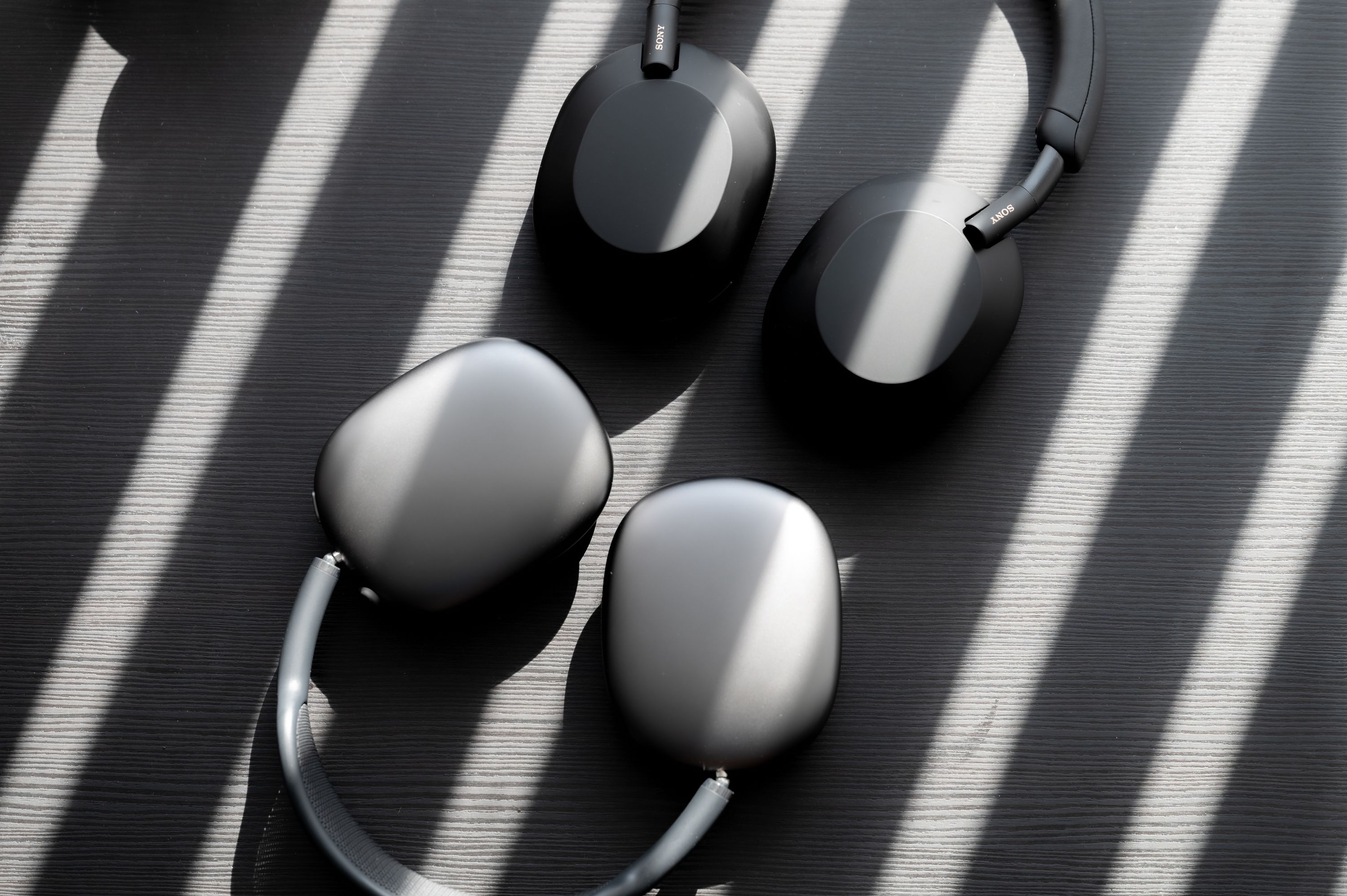
I returned my first pair of Apple’s AirPods Max because of comfort issues shortly after publishing my review. I ended up buying a second pair within a few months, though, because I missed their sheer sonic prowess.
After a bit of stretching to ease their clamping force, the AirPods and I got along much better. The combination of headband design and spacious ear cups does a good job of distributing their (significant) weight in a way that allowed me to wear them for extended periods of time. They’re no Bose, but I no longer need to take breaks every half hour or so to avoid discomfort.
More recently, Sony released the latest in their long-running line of flagship ANC headphones, the WH-1000XM5. I ended up buying a pair and, over the past little while, I’ve been meticulously comparing them against my AirPods Max to see which headphones I prefer.
These are my findings.
Build Quality
There are a few ways to evaluate build quality for headphones; you could simply judge these pairs based on their material choices, in which case you’d quickly conclude that the AirPods Max are the superior pair.
Alternatively, you could consider whether something being made of premium materials actually makes it better for its intended use.
The Sonys are made of cheaper, lighter materials that lack the sense of luxury you get when handling the AirPods Max. The plastic surface also collects fingerprints like they’re going out of style, so buy the light colour if this kind of thing bothers you. But, as a result of these material choices, the WH-1000XM5 are more compact, more flexible, and significantly lighter than the AirPods Max. I cannot overstate how much less heavy the Sonys feel both on the head and in the hand.
For a pair of headphones that’s designed to be a constant companion, the lighter weight of the Sonys makes a big difference and offsets a lot of the appeal of the AirPods’ sturdier construction.
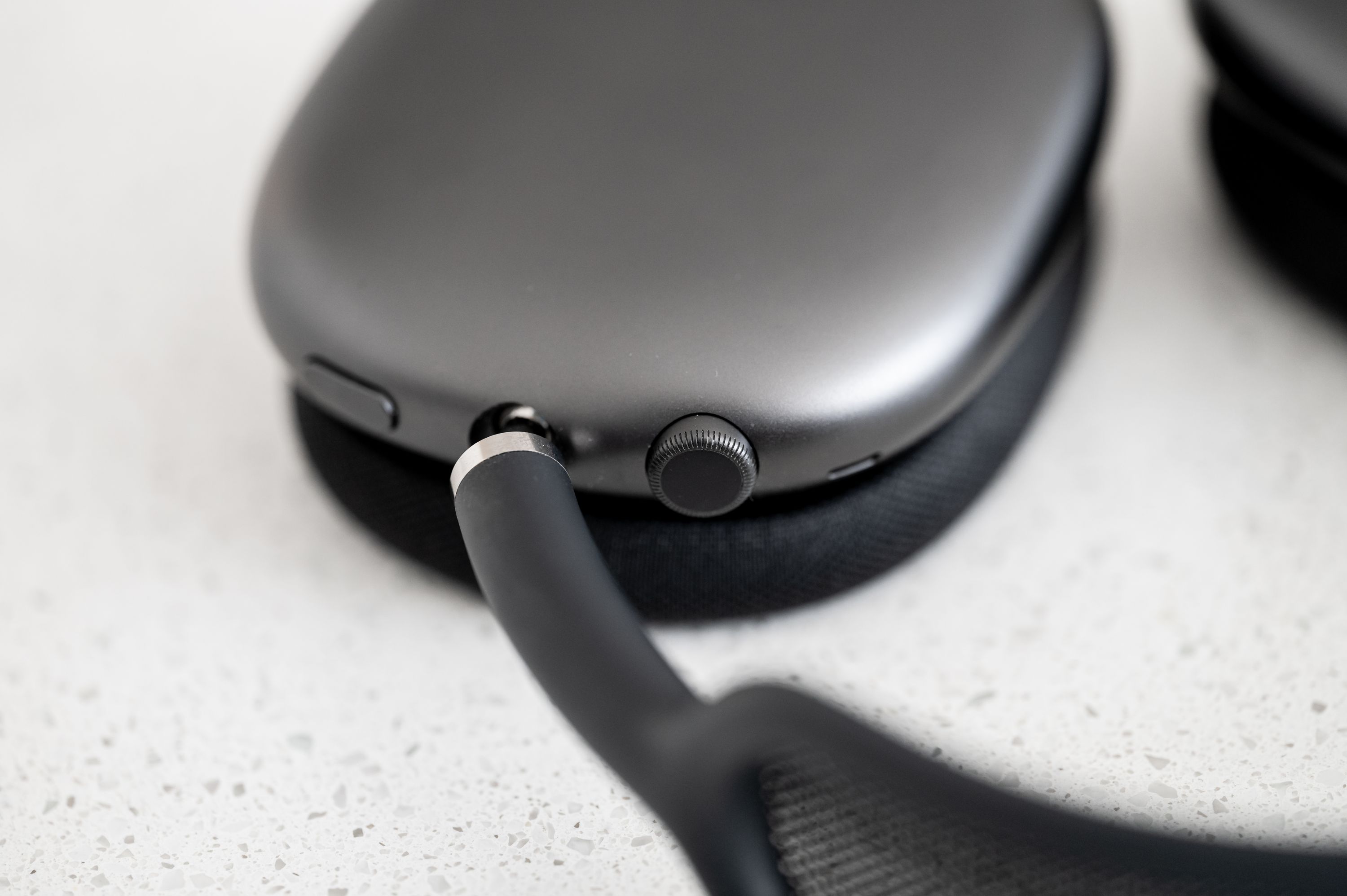
AirPods Max provide physical controls for playback and switching sound modes, and I’m glad they do because I generally find physical controls to be superior, particularly outdoors during the winter months. Though in that case the metal build of the AirPods presents its own set of problems. Sony combines both physical and touch-based controls and they work just fine, even taking advantage of the touch sensors to offer nifty features like being able to quickly activate transparency mode by holding your hand over the right ear cup.
I suppose what I’m getting at is that the AirPods are undoubtedly better built in purely material terms, but if you prioritize comfort and practicality over luxury, the Sonys are the obvious choice.
Comfort
After the first few days, I would have told you this category is a slam dunk for the Sony. They’re light enough to disappear on your head, they have a much gentler clamping force, and the texture of the ear cup pads is softer compared to the somewhat scratchy material of the AirPods Max ear cup pads.
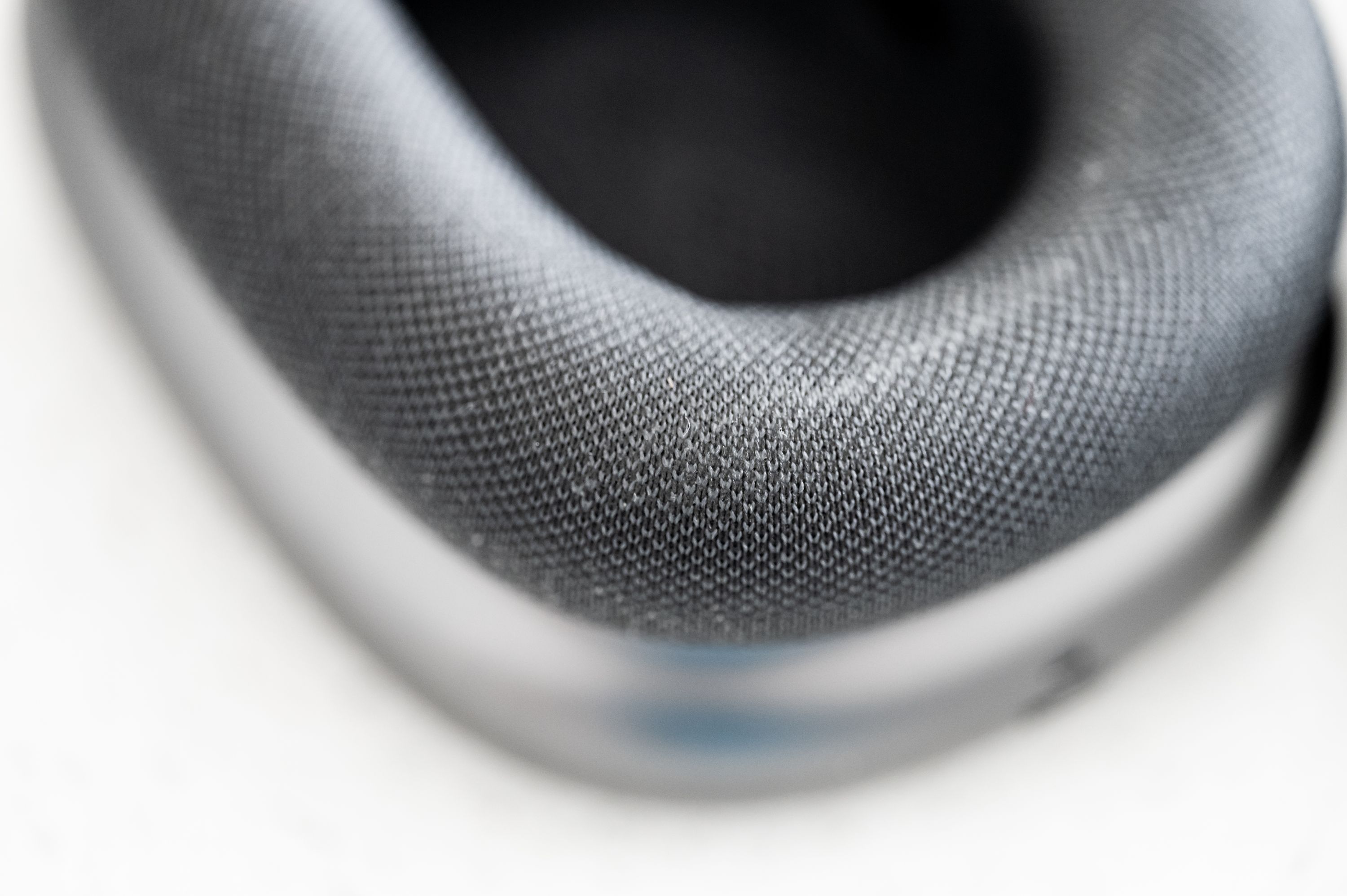
As I started to spend more time with them though, I realized Sony’s new design has a critical flaw: the headband is too narrow.
Unlike the AirPods Max’s broad mesh canopy headband design, the Sonys rely on a thin bar covered in plush cushioning. The cushioning is generous, but the bar is so narrow it ends up creating a pressure point that, over time, leads to a sore spot on the top of my head.
Shifting the position of the headband to sit further forward on my head does help, but I wasn’t able to find a combination of headband position and arm extension that entirely eliminated the discomfort. To be clear, this issue only manifests after extended wear, but it’s still a bother.
The AirPods Max, on the other hand, are much heavier but I’ve managed to find my way to a more comfortable experience with them. The most important step in that process was using a box to progressively stretch the frame. This eases the clamping force and allows the headphones to rest more naturally on my head rather than “holding on” like a vice.
Between that and finding the optimal positioning of the headband, I can now wear the AirPods comfortably for an hour or two at a time. Frankly, that’s still not great but it beats my initial experience of having to take them off after a half hour.
There are two other aspects of comfort I want to touch on briefly: stability and heat.
The AirPods Max feel less stable on the head because their weight makes it much easier for them to shift around as you move, or even as you look up or down. It’s the kind of thing that will bother some and not others, but even for simple things like walking there’s a sense that the AirPods are somewhat disconnected from your head. You can’t help but notice you’re wearing them.
The Sonys are light enough that they sit more firmly on the head. Gravity is no match for the featherlike weight of these headphones, and moving around maintains the illusion that you’re not wearing headphones at all.
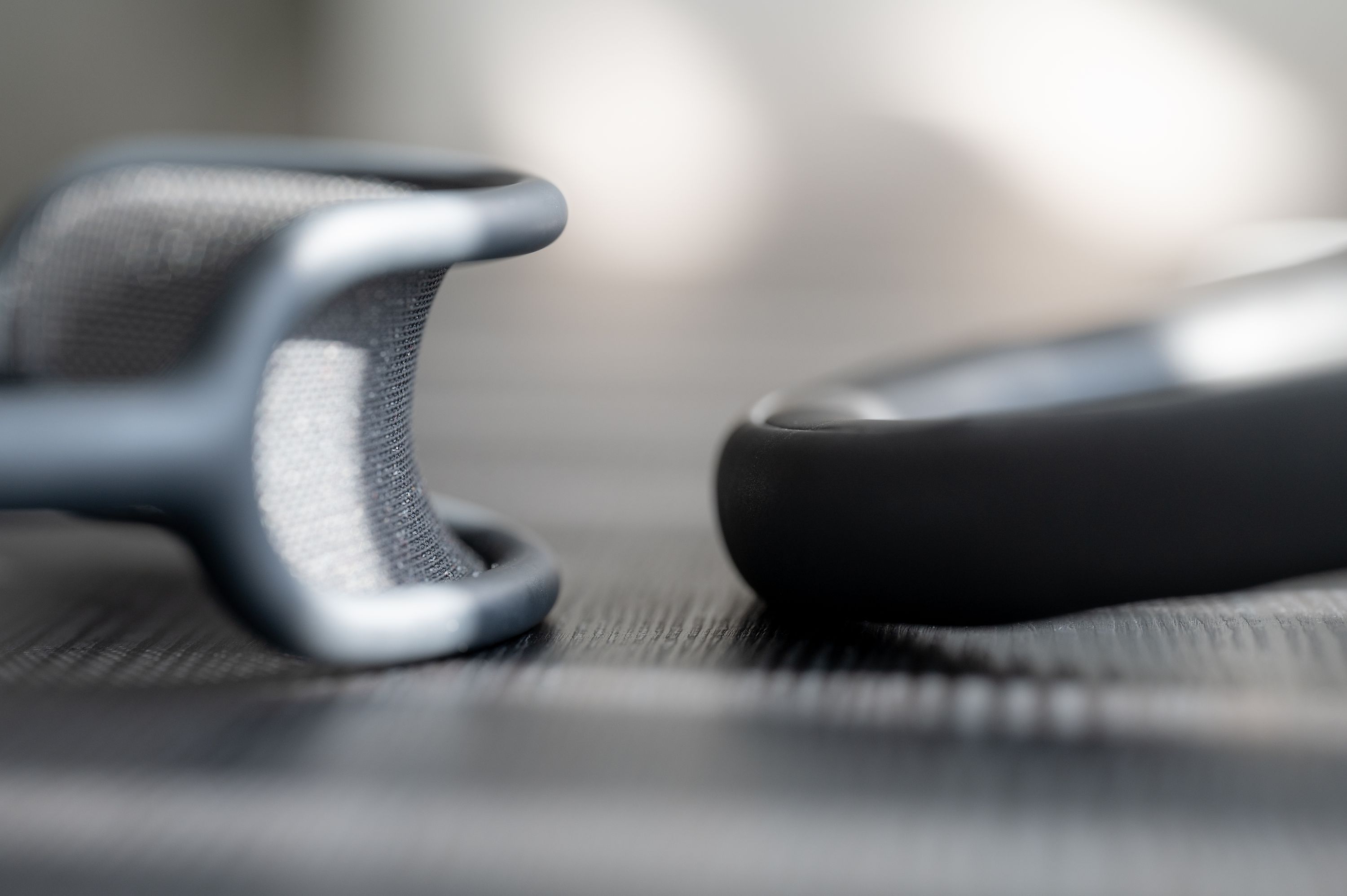
As for heat, the AirPods do a better job of keeping your ears cool because they have more breathable pads and more spacious ear cups. I prefer the smooth texture of the Sony pads, but between the smaller ear cavity and the better seal provided by the smooth pleather pads, the Sonys do lead to more heat build-up, especially on hot summer days.
I also want to call out the fact that the AirPods Max have easily replaceable ear cup pads, whereas the Sonys aren’t user replaceable—not great for longevity.
A kind reader brought to my attention the fact that you can replace the ear cup pads for the Sonys. It requires ordering parts from a fairly obscure website for one of Sony’s parts suppliers, and you’ll need to grab pads for left and right ears separately. Performing the swap isn’t quite as simple as the magnetic approach on the AirPods, but I’m glad to learn that it’s at least possible.
In the end, this category is a bit of a wash for me. Neither are perfect, so you have to decide which set of tradeoffs you prefer.
Sound
Profile & Adjustments
Similar to how I expected the Sonys to win on comfort, I expected the AirPods Max to win on sound. And just like the previous category, testing revealed a more nuanced outcome.
In general, I’ll say that the AirPods Max have a wider, more open sound signature. The sense of stereo width, the detail retrieval, and the sub-bass extension are all impressive aspects of the sound profile. They are, however, somewhat tame in their presentation. Polite. You may not pick this up in isolation, but in a head-to-head comparison with a pair of headphones like the Sonys, it’s fairly evident.
The WH-1000XM5 have a more veiled, warm sound straight out of the box. The details are there, but the tuning leans toward a less bright signature. But the Sonys have an important trick up their sleeve: unlike with the AirPods, you can adjust the sound to suit your taste.
By using the Sony Headphones Connect app, you can choose between a number of pre-made EQ (EQualization) presets, or—if you’re like me—you can roll your own. It turns out it’s possible to craft an EQ curve that brings the Sony’s sound profile much closer to that of the AirPods Max.
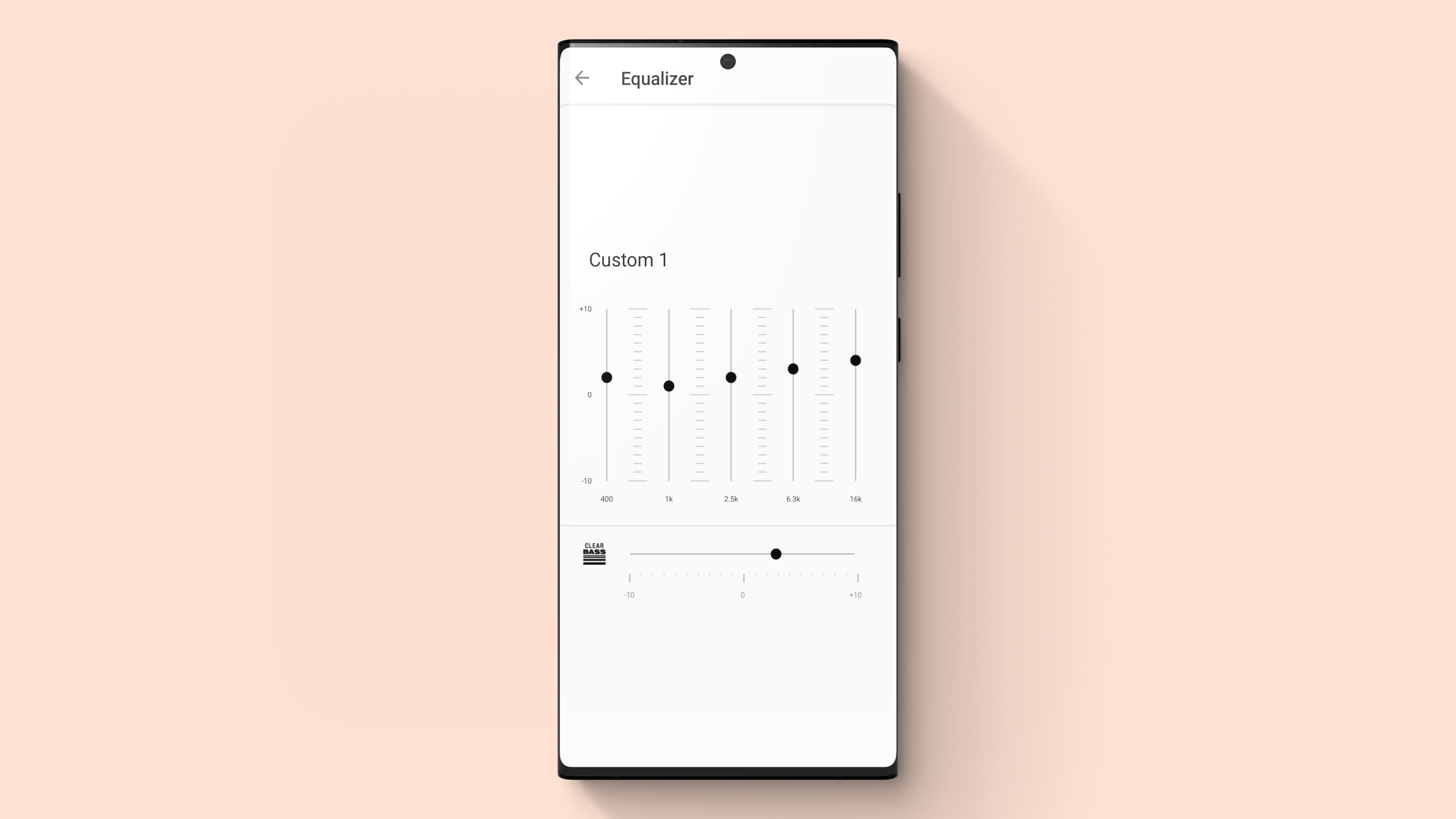 Try these settings out if you want a good starting point for a more open, spacious sound profile for your WH-1000XM5. It’s bass-forward but in a fun way; dial in Clear Bass to taste—I have it set high here because I was rocking out to some dance tunes.
Try these settings out if you want a good starting point for a more open, spacious sound profile for your WH-1000XM5. It’s bass-forward but in a fun way; dial in Clear Bass to taste—I have it set high here because I was rocking out to some dance tunes.
I spent a few days working on a profile to do just that, and while it’s not perfect given the limitations of an in-app EQ, it closes the gap pretty significantly.
Tuned using my EQ curve, the Sonys open up, with a brighter, more open frequency response. The remaining sonic differences become a matter of taste; the AirPods retain a slight advantage in terms of stereo separation, but the Sonys end up with a much more impactful bass presentation.
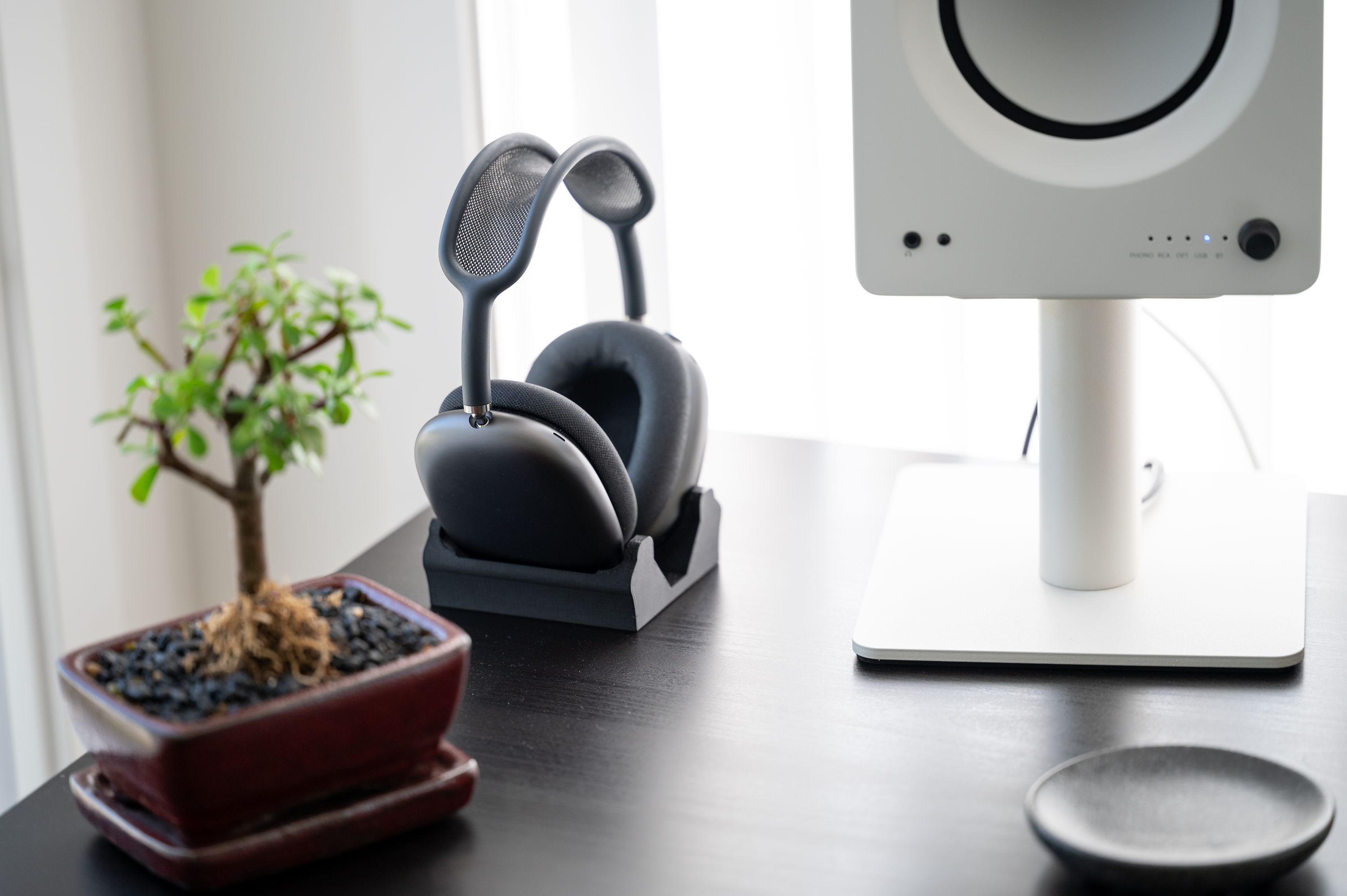
High-Resolution Audio & LDAC
There is, of course, another dimension to explore here: performance with higher resolution audio sources.
The AirPods Max famously do not support lossless audio—even wired—and iOS & macOS do not support any Bluetooth codec that transmits high-bitrate audio data. Moreover, plugging the AirPods Max in (using the absurdly priced, criminally thin, and flimsy-feeling cable) results in…not much difference.
You get a bit more volume and a slightly different sound, but you’re really splitting hairs. More importantly, the wired connection doesn’t defeat the internal DAC (Digital to Analogue Converter), which means the AirPods Max will always sound like the AirPods Max. Wired or wireless, everything is being filtered through the same software processing.
Compare this to the Sony, which not only supports high-resolution codecs over Bluetooth (I’ll come back to this), but also supports a more traditional wired listening mode. Plugging the WH-1000XM5 in requires no special cable thanks to the standard 3.5mm port, and it works either passively (with the onboard processing turned off), or actively (allowing for ANC and a sound profile that’s more in line with its wireless performance). I have to spend more time experimenting with different external DACs, but the fact I can even do so proves the point that the Sonys are more flexible in terms of input options.
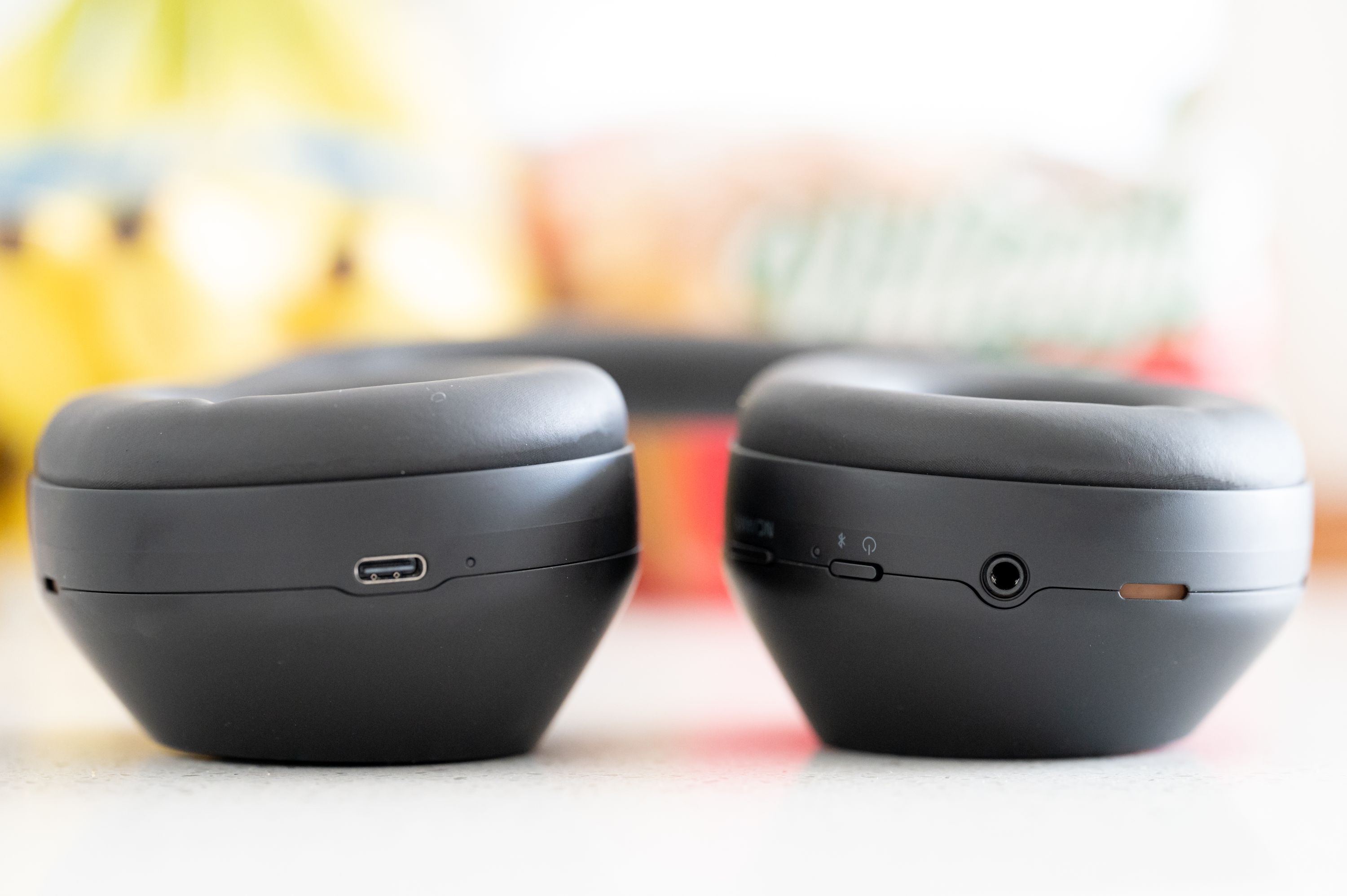
That brings me back to Bluetooth, which is how the vast majority of people will use these headphones the vast majority of the time. Sony’s headphones support more than just the SBC & AAC codecs you get on the AirPods Max. To be honest, I didn’t think this mattered much until I had the opportunity to connect the WH-1000XM5s to a Samsung Galaxy S22 Ultra and use the LDAC codec, which provides support for high-resolution audio.
All I can say is: I was wrong.
LDAC provides a noticeably better experience, and when directly comparing the same music between iPhone + AirPods Max and Galaxy + WH-1000XM5, I prefer the latter. The experience is more engaging, with extraordinary detail and tight, involving bass.
Would you notice if you didn’t have both pairs on hand to A/B test? Perhaps not. And as an iOS/macOS user, you’re stuck with the lower fidelity Bluetooth codecs anyway. But if you’re the kind of person who appreciates options and uses multiple platforms, the Sonys provide more bang for your buck.
Sound Summary
I could go on about the sound, but it boils down to this: these are both exceptional sounding headphones. The AirPods Max straight out of the box, and the Sonys with a bit of EQ.
With the AirPods Max, if you don’t like the sound you’re mostly out of luck—a few obscure accessibility adjustments notwithstanding. With the Sony, you can use the EQ to steer their sound toward that of the AirPods, or you can push further in the opposite direction if that’s your preference. Hell, you could create a profile for each tuning and switch between them whenever you want. Sony gives you the choice.
The AirPods have a flatter, more analytical profile (they’re by no means flat reference headphones but they’re closer to that target than the Sonys). The Sonys have a warmer, more engaging profile that’s flattering to just about any sound source.
Given the reference-style sound signature of the AirPods Max (again, relatively speaking) vs. Sony’s more fun presentation, I can’t help feeling that the AirPods are a better fit for creators, while the Sonys are better for consumers.
For what it’s worth, I find myself reaching for the Sonys when I want to listen to music. Those headphones playing lossless material from Apple Music on the Galaxy S22 Ultra over LDAC is simply a better experience for me.
Of course, we use headphones for more than just music, though.
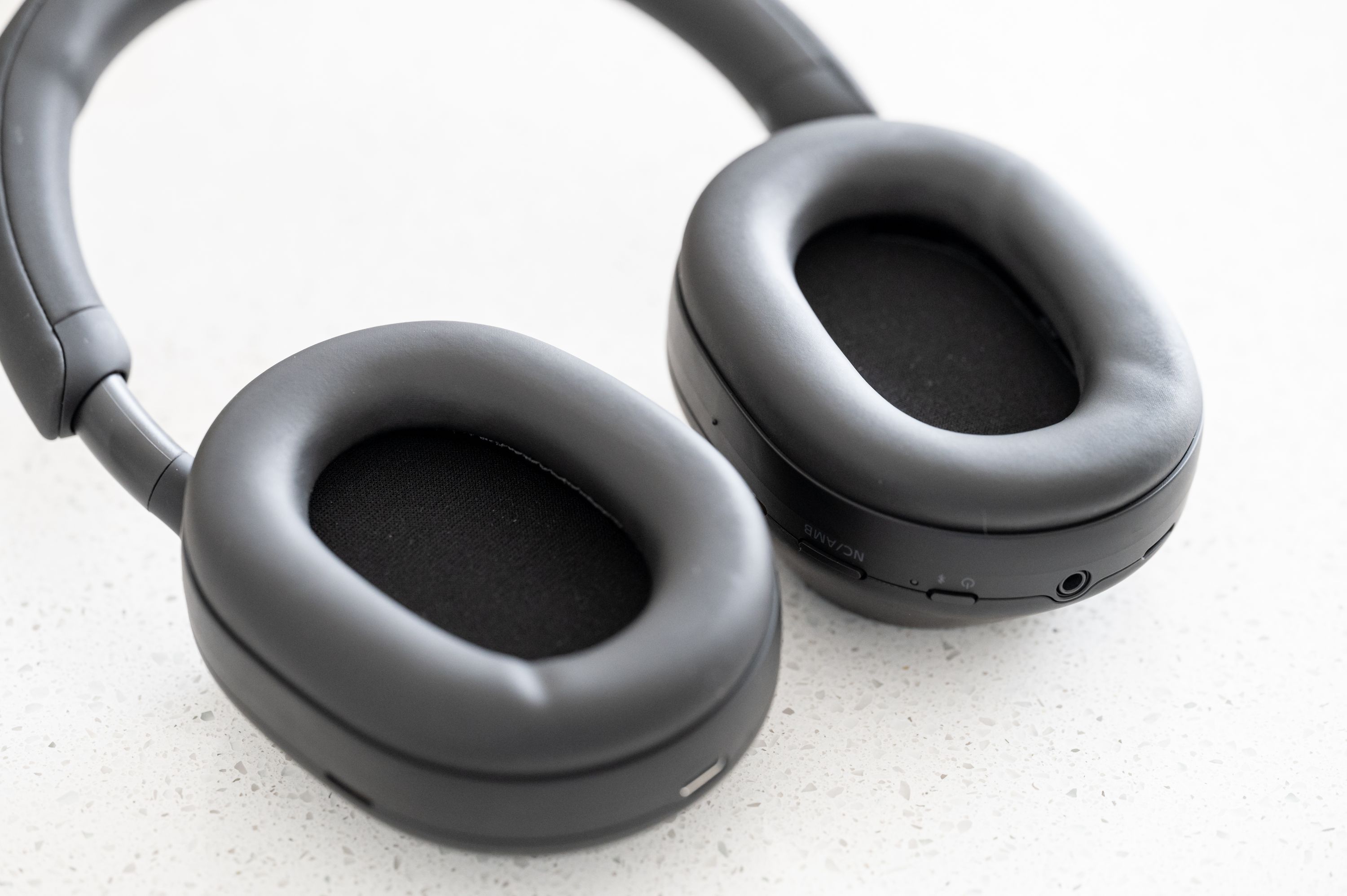
Noise Cancellation & Transparency
I want to share some thoughts on the bigger-picture aspects of living with these two headphones.
First: Active Noise Cancelling (ANC) and transparency. There’s no ambiguity here; the Sony have superior noise cancelling, and the AirPods Max have a superior transparency mode.
For noise cancellation, the Sonys are better not only at active noise cancellation, but passive too. That superior ear cup seal on the Sonys allows them to isolate sound much better than the AirPods Max do, even without ANC turned on. The simple passive sound blocking of the ear cups is remarkably effective, to the point where I had to check whether I had turned ANC on without meaning to. Both pairs provide class-leading ANC, but the Sony are just a bit better.
One potential downside of the Sonys is that their dual processing chips adjust the ANC in realtime in a way that can’t be disabled. I’ve seen reports of folks running into situations where the ANC seemed to fluctuate, leading to a disorienting and unpleasant experience. I believe them, but in my testing so far I haven’t been able to replicate this issue.
When it comes to transparency, Apple remains firmly at the top of the leaderboard. Just like with the AirPods Pro, the AirPods Max provide the most convincing transparency mode I’ve ever encountered. It’s truly remarkable how, well, transparent they sound. Things don’t sound tinny or unnaturally boosted, and they even do a good job of representing the positioning of sound around you. It’s very impressive and a clear step above the Sonys.
Having said that, the Sonys are by no means bad at transparency mode—silver is still on the podium—but the gap is real and something to be aware of if this is an important feature for you.
Microphones
Another important consideration for this category is microphone performance, and here again the two headphones are closely matched.
The AirPods Max do a slightly better job of cancelling out room tone, but the Sony’s mic array produces a fuller, less processed-sounding depiction of your voice. This holds true whether you’re in a quiet environment or a loud one, for the most part.
Spatial Audio vs. 360 Reality Audio
To wrap up the sonic aspects, I want to spend just a bit of time on Apple’s Spatial Audio and Sony’s equivalent, 360 Reality Audio. Both systems provide simulated surround sound from compatible sources, and both work very well. Recently, Apple added the ability to use your phone to “scan” the shape of your ears to provide an even better experience, something the Sony equivalent has offered for some time now.
The truth is, I basically never use this feature.
I try it out now and then when watching movies or TV shows on the Apple TV using the AirPods Max, but I have yet to discover any music sources where I prefer this kind of surround audio to the typical stereo mix. Between the two, Spatial Audio is more widely available, even providing a system-level option to fake compatibility for normal stereo sources. I don’t think it sounds good, but I guess it’s nice to have the option. When you do have a compatible source, Sony’s Reality 360 Audio provides a more convincing sound stage that’s less distant and more precise, but Spatial Audio is (optionally) head-tracked, adapting the sound to account for where you’re facing relative to the sound source.
For me, these features could just as well be entirely absent and it would make no difference to my appreciation of the headphones.
Battery Life & Charging
Next up is battery life, and here again there’s a clear winner.
The Sonys absolutely curb-stomp the AirPods Max in longevity because of a magical feature called “the ability to turn them off”. AirPods Max have a number of low power modes, and over time you learn the special incantations required to lull them into deeper sleep, but even with a desk stand that contains magnets to force them into the lowest power state, I have to charge my AirPods Max every couple of days, if not more frequently depending on usage.
The Sonys, on the other hand, have a power button and will also automatically turn off if you like. Either way, the end result is better battery life. Like way better. I’ve gone a full week of fairly heavy use without having to charge them. This has obvious lifestyle benefits as you don’t need to worry about battery, for the most part.
When it does come time to charge these headphones, the AirPods Max require a Lightning cable whereas the Sonys charge over USB-C. I’ll be the first to admit that USB-C’s rollout has been less than tidy, but at the end of the day it’s the more universal connector and I want all my devices to use it. If I decide to keep the Sonys, I can now travel with only USB-C charging cables because everything else I own charges over USB-C or, in the case of the iPhone and AirPods Pro, wirelessly. I really appreciate this detail.
Speaking of travel, it’s well established that the AirPods Max case is essentially useless, but both headphones share the same shortcoming: they only fold flat rather than having a collapsing arm design like the previous generations of WH-1000XM or competitors like the Bose QC45. The Sonys at least come with a terrific hard case that’s honestly not as bulky as other reviews would lead you to believe, and I’d much rather have a hard case than not.
Aesthetics & Style
I’m not a fashionista, but I think it’s worth mentioning the aesthetics of these headphones. I happen to think the AirPods Max are quite ugly, but I don’t really care about that when it comes to headphones except in the sense that they are unmistakably AirPods Max. Like so many other Apple accessories, they’re designed to signal their identity, which you will either like or dislike. I don’t particularly want my technology to draw attention to itself, so the more distinctive and ostentatious design of AirPods Max makes me feel a little self-conscious.
The Sonys, on the other hand, are a little more generic looking, though not quite as much as their previous iterations. They’re ugly too, but in a more boring way. The most noticeable aesthetic drawback of the WH-1000XM5 is actually the fact that the ear cups stick out quite a bit further than the AirPods Max ones do. The AirPods Max look slimmer on the head.
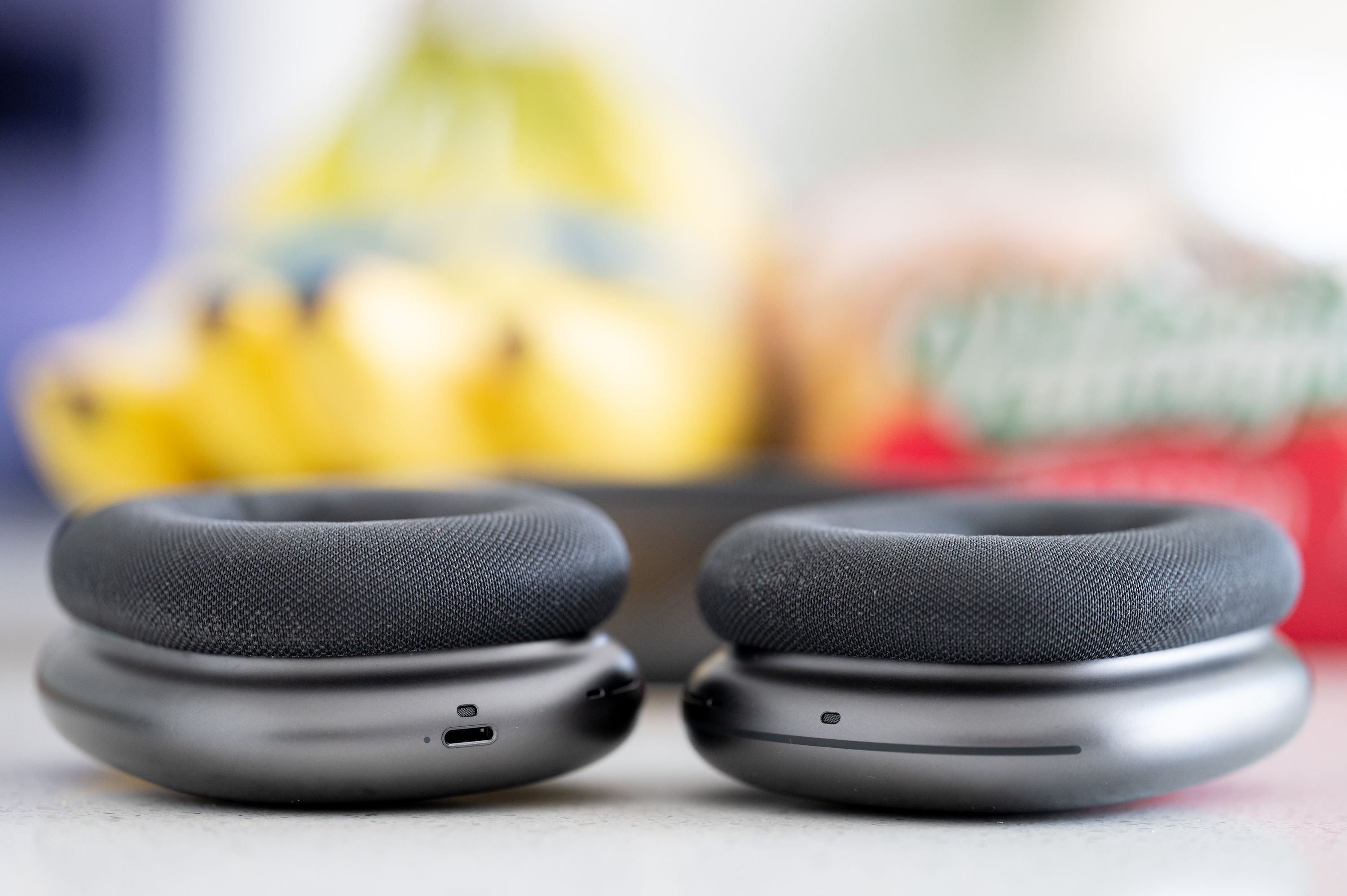
Software Features
One final area worth investigating is the software side of things. We’ve already seen how Sony’s app allows for more customization of the sound profile via EQ, but the WH-1000XM5 boast more features than the AirPods Max in other areas too. While both headphones offer an auto-pause feature for when you temporarily remove them from your head, the Sony pair respond faster and more reliably.
Sony also provides an excellent feature called Speak to Chat that does what it says on the tin and works extremely reliably in my testing. In fact, what I thought would be a gimmick has turned out to be a standout feature for me. No matter what you’re listening to, if you simply start talking, the Sonys will pause your audio and flip into transparency mode so you can have a brief conversation without having to remove the headphones.
I still find it rude to interact with others while wearing headphones—especially when the auto-pause works so well—but there are situations where this comes in handy and I’m happy to have it.
There’s more to the Sony software picture: you can control the level of transparency, which is great, and you can also use the app to set up location-based mode and profile switching. It’s not for me, but it is nifty.
I guess I should also talk about pairing and multi-device connectivity. The AirPods Max have Apple’s proprietary enhancements to make initial pairing and device switching seamless within their ecosystem. I find auto-switching is still hit or miss for me, and as cool as it is I think the value of this entire feature set is a little overstated in most reviews.
The Sonys allow for the Android equivalent of quick pairing, but on iOS they behave like any other headphone. You can pair them to two devices at once for easy switching, but you give up the ability to use the LDAC codec when doing so. I expected the Sonys to feel like a downgrade in this respect but I honestly don’t find it makes a big difference in my day to day usage.
Apple AirPods Max vs. Sony WH-1000XM5
So which should you get?
I suspect the biggest differentiator will actually be Spatial Audio. If that’s important to you, for instance if you intend to use these mainly as TV/movie watching companions, then the AirPods Max give you that option for way more media sources.
If you’re not into that, the choice becomes much more challenging. From the perspective of fitting into a multi-device, multi-platform lifestyle, the Sonys have the upper hand. A more ubiquitous charging protocol, more versatile connectivity, better battery life, a proper case, and the significantly lower weight add up to a more well-rounded pair of headphones.
If you want your headphones to look and feel luxurious, then the AirPods Max win hands-down. They also sound better straight out of the box, though you have almost no ability to tune that sound if it doesn’t appeal to you. The Sonys need a bit of EQ before they sound the way I want them to, but once you perform that one-time 15-second step—and especially if you can take advantage of LDAC—they sound just as good if not better. I didn’t expect to be saying that, but here we are.
I don’t know yet which pair I’ll be keeping, mostly because I do still love many aspects of my AirPods Max including the more comfortable headband, the more spacious (and replaceable!) ear cups, and the wider sound stage.
If I didn’t already own the AirPods Max though, I’d probably just buy the Sonys and call it a day.